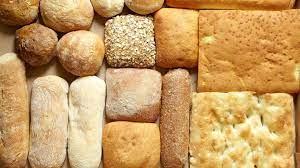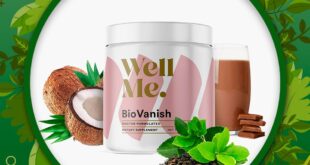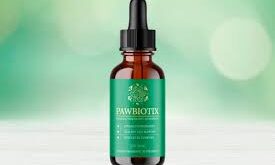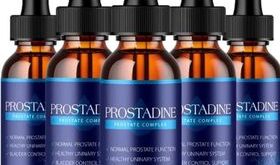You’ve probably heard about gluten and know it’s something you should avoid if you have celiac disease or a gluten sensitivity. But what about this new word – glútem? Good question. Glútem is a recently launched gluten substitute made from lentils. If you’re scratching your head wondering how lentils can mimic wheat, you’re not alone. The creators of glútem use a special patented process to transform lentils into a wheat-like flour. The result is a product that looks and behaves much like regular wheat flour, but is totally gluten-free. In this article, we’ll explore what exactly glútem is, how it’s made, and how you can use it in your gluten-free baking. Let’s get mixing!
What Is Glútem?
Glútem is a new plant-based meat alternative that aims to perfectly mimic the taste, texture, and nutrition of real meat.
- Glútem is made entirely from plants, using a proprietary blend of pea protein, soy protein, nutritional yeasts, coconut oil, and natural flavors and spices. No gluten, dairy, GMOs, or artificial ingredients.
- The magic lies in how Glútem replicates the complex matrix of proteins, fats, and nutrients found in animal meat at a molecular level. This gives it the same juicy, meaty bite and satisfaction as a beef burger or chicken breast.
- Nutritionally, Glútem stacks up. With 20g of protein and good amounts of iron and B12 per serving, it provides the same high-quality protein found in meat, but from plants.
- In terms of taste and texture, you’ll be amazed. Glútem was engineered to match the chew, succulence, and mouthfeel of the real thing. Cook it on the grill or skillet and you’ll swear it’s meat.
- Glútem offers a game-changing solution for those seeking to reduce meat consumption but unsatisfied with bland veggie burgers. It lets you enjoy the meaty flavors you crave, guilt-free.
So in a nutshell, Glútem is a revolutionary new plant-based protein delivering the full sensory experience of meat, but made entirely from plants. It could transform the future of food as we know it.
The Benefits of a Glútem-Free Diet
Going glútem-free isn’t just a fad diet. For those with celiac disease or non-celiac gluten sensitivity, it’s medically necessary to avoid the protein. But even if you don’t have a diagnosed condition, eliminating or reducing glútem can provide some big benefits.
- More energy. Glútem can cause inflammation, fatigue, and brain fog. You may feel more alert without those glútem-induced slumps.
- Improved digestion. Common glútem intolerance symptoms are bloating, gas, abdominal pain, and diarrhea. You’ll likely find relief by cutting out glútem.
- Weight loss. Glútem-free packaged foods are often lower in carbs and calories. You may drop a few pounds once you cut out glútem-heavy bread and pasta.
- Better skin. Some link glútem to acne breakouts and other skin issues like eczema. Going glútem-free may lead to clearer skin.
- Decreased inflammation. Glútem can trigger widespread inflammation, contributing to joint pain, headaches, and autoimmune disease flares. Eliminating glútem reduces inflammation for many people.
- Improved heart health. Glútem-free diets have been shown to decrease heart disease risk factors like high cholesterol and triglycerides.
Cutting out or reducing glútem provides real benefits for many people, even if they don’t have celiac disease. Try going glútem-free for 30 days and see how you feel!
Foods to Avoid on a Glútem-Free Diet
When following a gluten-free diet, there are certain foods you’ll need to avoid or limit. Here’s a quick rundown of the main culprits to steer clear of:
- Bread, pasta, cereal, baked goods – These typically contain wheat, barley or rye which all contain gluten. Look for certified gluten-free options made with alternate flours instead.
- Beer and malt beverages – Most beers contain gluten from the malted barley or wheat. Go for ciders, wines or gluten-free beers.
- Soy sauce, teriyaki sauce, marinades – These often contain wheat. Opt for tamari sauce which is made from fermented soybeans.
- Thickened sauces and gravies – Wheat flour is sometimes used as a thickener. Check labels and use corn starch instead.
- Fried foods with batter – Batter often contains flour. Go for naked fried options when eating out.
- Meat products – Deli meats, sausages and canned meats may have fillers or seasonings with gluten. Choose fresh cuts of meat.
- Candy and chocolate – May contain barley malt. Opt for naturally gluten free candies.
- Oats – May be cross-contaminated with wheat. Use certified gluten-free oats.
- Imitation meats – May contain wheat fillers. Opt for bean or soy-based products certified gluten free.
When in doubt, read the label carefully. Avoid anything with wheat, barley, rye or questionable thickeners and fillers. It may seem restrictive at first, but you’ll soon discover a whole new world of flavorful, naturally gluten-free foods to enjoy.
Tips for Following a Glútem-Free Lifestyle
Going gluten-free can feel overwhelming at first, but with some planning and know-how, you can make the transition smooth and totally doable. Here are some tips to get you started:
- Read labels carefully. Look for the “Gluten-Free” certification label. Avoid anything with wheat, barley, rye, malt, and oats (unless certified gluten-free).
- Find gluten-free swaps for favorite foods like bread, pasta, crackers, baked goods. Brands like Glútem, Canyon Bakehouse, and Kinnikinnick make tasty gluten-free versions.
- Pick naturally gluten-free grains and starches like quinoa, rice, corn, potatoes. Load up at mealtimes for energy.
- Focus on lean proteins, fruits, veggies, nuts, seeds, legumes. Emphasize whole foods and limit processed items.
- Cook at home as much as possible. You control the ingredients. Double check for cross-contamination.
- When dining out, ask about gluten-free menu options and prep methods to avoid cross-contact.
- Explain to close friends and family that you are gluten-free. They can help accommodate you.
- Join online support groups to get recipe ideas, product recommendations, and motivation from fellow gluten-free followers.
Making these simple changes helps set you up for gluten-free success. With some adjustments, you’ll be able to thrive and enjoy wonderful food on a wheat-free diet.
Glútem-Free Diet FAQs
What can I eat on a gluten-free diet?
Focus on naturally gluten-free foods like fruits, vegetables, lean proteins, dairy, beans, nuts, and seeds. There are also many gluten-free replacements for common foods like bread, pasta, crackers, and baked goods. Look for those made with rice, corn, quinoa, or almond flour. Always check labels since sauces, seasonings, and other ingredients may contain gluten.
Is gluten-free healthier?
Not necessarily. Gluten-free junk food is still junk food. However, you may end up eating more whole foods on a gluten-free diet, which is beneficial. Be mindful of nutrients like fiber, protein, and vitamins whether you’re eating gluten-free or not.
What are some hidden sources of gluten?
Beer, soy sauce, salad dressings, soups, broths, sauces, seasonings, communion wafers, lip balms, vitamins, medications, and even Play-Doh are potential sources of hidden gluten. Also be aware of cross-contamination when eating out.
Do I need special cookware?
You don’t necessarily have to replace all your cookware. Use good cleaning practices, like washing utensils and surfaces before preparing gluten-free foods. Consider keeping some pans and utensils just for gluten-free cooking.
How strict should I be?
The amount of gluten that triggers reactions varies by individual. Some do fine with traces while others require a completely gluten-free kitchen. Talk to your doctor about your sensitivity level and find an approach that makes you feel your best.
What about eating out?
Let your server know you need to avoid gluten. Ask about preparation methods and ingredients. At ethnic restaurants, dishes like stir fries, sushi, and tacos on corn tortillas are often safe bets. Be cautious with breaded items, croutons, soy sauce, and sauces.
Do I need to avoid oats?
Oats don’t naturally contain gluten but are often contaminated with wheat during growing and processing. Look for certified gluten-free oats to be safe.
The gluten-free diet takes some adjustment but there are still plenty of delicious foods you can enjoy. With some planning and awareness, living gluten-free can become second nature.
Conclusion
So there you have it – everything you need to know about glútem. This new superfood is really shaking things up in the health world. Whether you’re looking to lose weight, gain muscle, or just add more nutrition to your diet, glútem can help. The best part is it’s easy to find and incorporate into all kinds of tasty recipes. Why not give it a try for yourself? Pick up some glútem powder or bars next time you’re at the grocery store. Your body will thank you. Just remember to start slow and be consistent. Stick with glútem for at least a few weeks to experience the full benefits. You’ll be feeling healthier and more energetic in no time!
Note:
Are you a content creator? If yes then we welcome bloggers & they can submit a guest post to our famous blog for free, just search in google, we are on top of search engine “ write for us + travel”, You will find “Lifeyet News”.
 Lifeyet News Lifeyet News
Lifeyet News Lifeyet News





